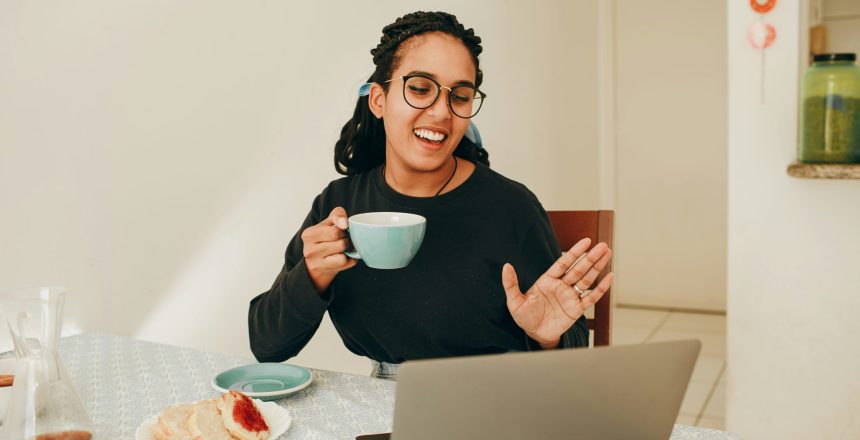
Imagine going out and not being able to hear sirens or broadcasts of impending threatening weather. What would it be like going to a movie, having only the option of reading the actors’ lips? For those who are deaf and hard-of-hearing, these are very possible scenarios they face daily. With much of the world designed for those who have the ability to hear, it can be hard to navigate, and feel safe, in many situations.
While there are certainly plenty of challenges for those who are deaf, more accommodations and accessibility tools have been developed, improving access to the hearing world and increased inclusivity. Technology, for example, provides a number of tools for the deaf and hard-of-hearing, making written communications from speech and video chats a possibility. Making things that are typically accessible to those who are hearing is vital to inclusivity of the deaf community and giving these individuals the same access to information, enjoyment, and success.
Accessibility Tools for the Deaf and Hard-of-Hearing
There are several options that play important roles in helping the deaf community join the hearing world including:
- Hearing dogs: As many know, these incredible companions provide confidence and security when navigating the hearing world, alerting them to important sounds and noises, and becoming their owners’ set of ears.
- Captions and Subtitles: For those who are hearing, subtitles make a huge difference when a show or movie is in a different language. Without this assistance, it would be difficult to follow the storyline. Similarly, captions and subtitles provide the opportunity for the deaf and hard-of-hearing community to follow along and remain engaged. This also limits the difficult, and often exhausting, process of trying to read lips, and possibly missing out on valuable information.
- Sign language Interpreters: For those who rely on using American Sign Language, having an interpreter present is imperative, especially for live theaters, conferences, and speeches. Using interpreters provides an invaluable service, allowing deaf individuals to understand and follow storylines, and brings them into a shared experience, rather than potentially placing them on the outside without the ability to hear.
- Assistive listening devices: A number of services and tools help individuals to interact with the world around them. This may include such devices as video chat, alerting systems, adapting sounds into visual cues, and internet captioned phone services. These devices and tools allow individuals to join in communication and safety awareness, similar to what a hearing person might experience.
- Speech-to-text services: As technology continues to advance, this has been a helpful tool for the deaf and hard-of-hearing, giving additional access to communication.
- Written materials: While written materials have been around for quite a while, this is still valuable in order for individuals to learn and convey information. It allows communication to take place between individuals and provides a way for those who are deaf to obtain information that is shared verbally with others, such as during a class.
More is Still Needed
While there are several options available that help bring the hearing world to the deaf and hard-of-hearing, more can still be done, even in smaller, one-to-one settings. Here are some ideas and accommodations that can help make events and daily situations more accessible and inclusive:
- Communication Preferences: Many individuals have their preferred learning and communication methods, and this includes the deaf and hard-of-hearing community. Rather than making assumptions about a person’s preference or their communication approach, take some time to connect and learn about different methods.
- Clear Line of Sight: Ensure physical barriers are removed in rooms and buildings, so everyone can easily see exit signs and flashing fire alarms.
- Written Communications: In workplaces and learning institutions, conversations between colleagues, students, and teachers can be helpful in working through problems, collaborating, and gaining understanding and opportunities. Having some key points in a written form can be helpful as an alternative to impromptu chats, as well as providing key takeaways from these types of conversations.
- Signage and Visual Cues: During events or in busy areas, such as airports and train stations, signs and visual directions provide necessary information and guidance. Additionally, for activities during events, providing visual, step-by-step instructions can make it easier for everyone to follow and partake in the activity.
With so much in society designed for those who hear, the presence and use of accessibility tools is imperative in ensuring the inclusion of the deaf and hard-of-hearing community. Making the world more accessible gives everyone the same opportunity to learn, understand, and engage. While there are options available to bring the hearing world to deaf and hard-of-hearing individuals, more work can still be done. With continued accommodations and mindfulness of hearing differences, whether it is in small settings or large events, more can continue to become accessible.
- Tags: Accessibility, Deaf and Hard-of-Hearing, Inclusivity, Your Hearing Dog
